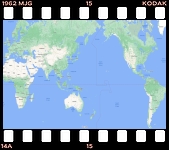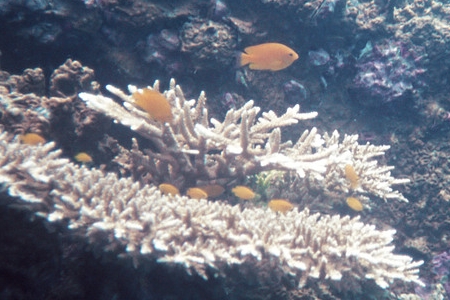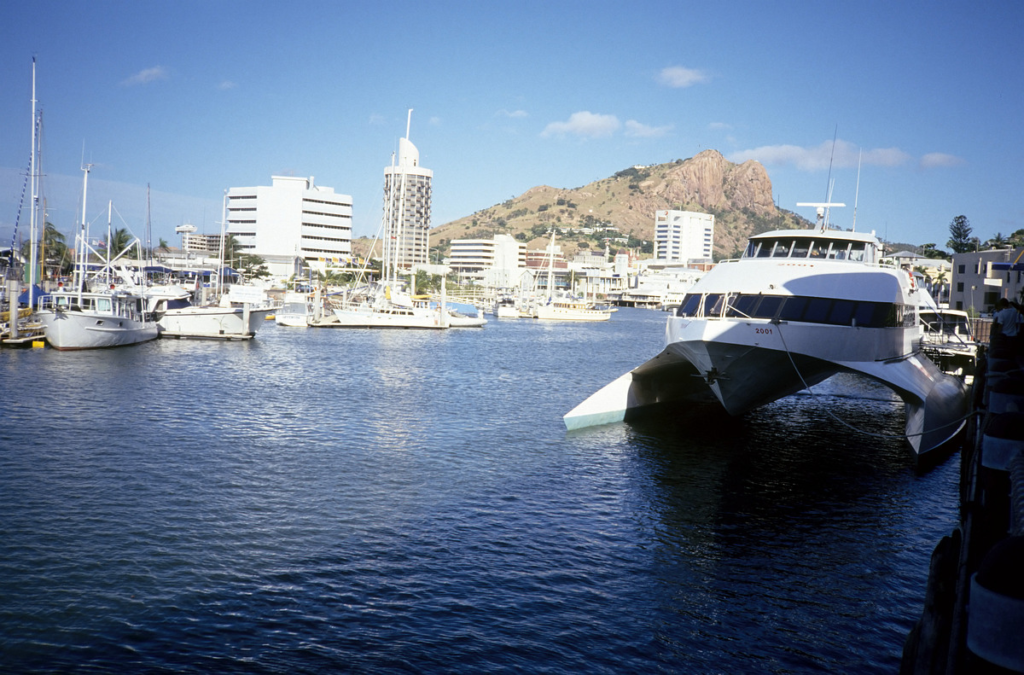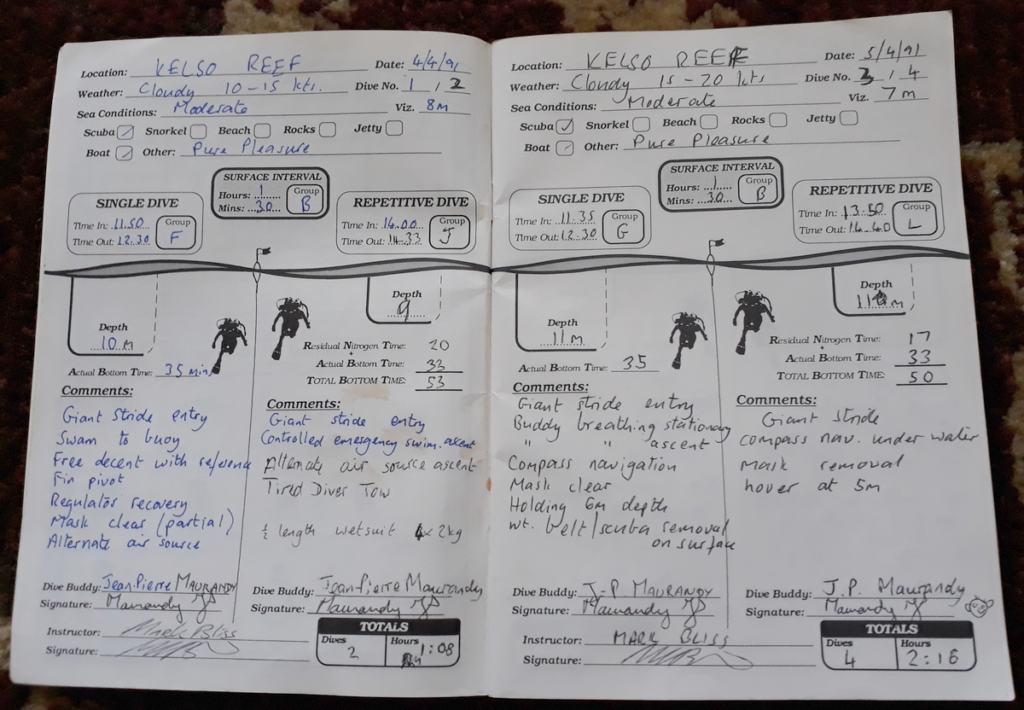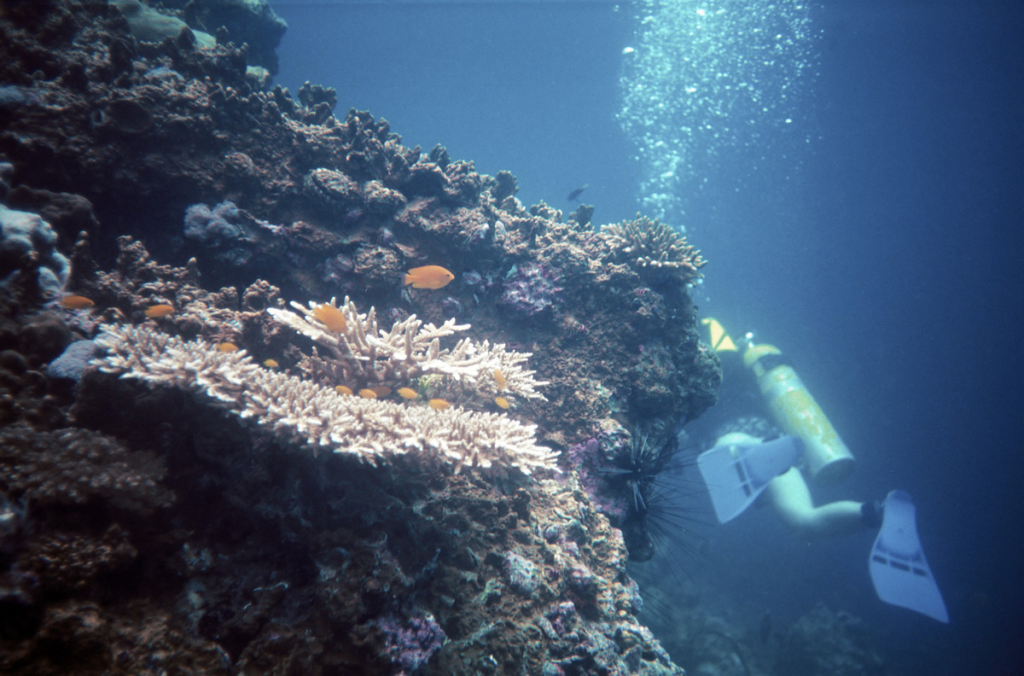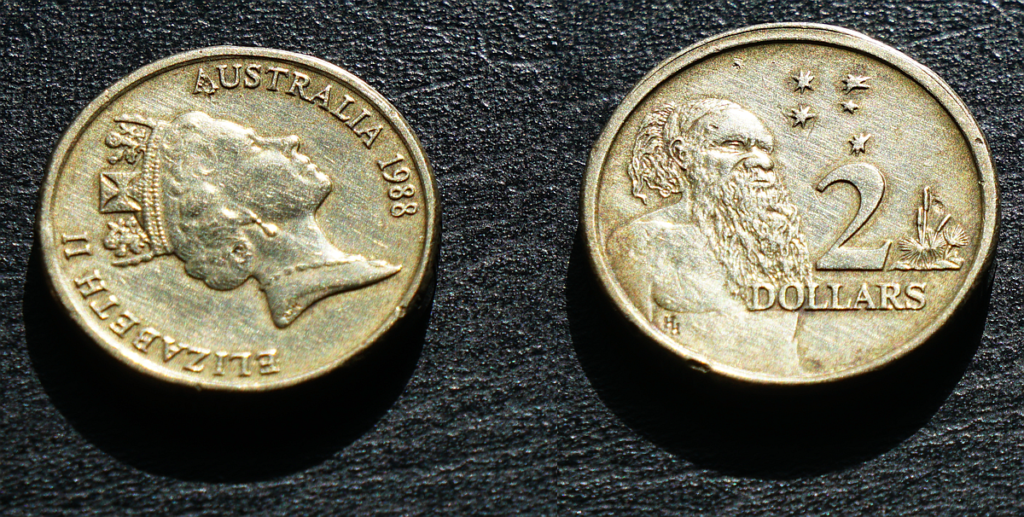Mark, the instructor, made us get up at the crack of dawn for our final pool training day (3rd April) – by 6:45 am we were at the dive centre. We were given some training at skin diving – this is going underwater with a mask and snorkel, but without the scuba gear. I wasn’t very good at it – the others all seemed to be experts – but eventually I managed to swim 2 lengths underwater.
The afternoon was more technically challenging – we were taught how to remove all the scuba gear, and even the weights, underwater. Then we had to put everything back on again and return to the surface. Then came the most dramatic emergency procedure – buddy breathing. You always dive as a team of 2 (my buddy was Jean-Pierre) and if one person runs out of air (an extreme case) you signal to your buddy who then shares his regulator with you. You each take 2 breaths from the regulator and then pass it to your buddy, as you both come slowly to the surface.
In the final written exam I only got 98%, which I was somewhat miffed about, since the one question (out of 50) that I got “wrong” was because it was badly worded, not because I didn’t know the answer! Having got this part of the course under our belts, I went out later for a celebratory beer with Jean-Pierre.
On 4nd April, I was up by 7 am ready to head down to the dock for the trip out to the reef. The boat looked impressive – it was a high-speed catamaran, of “wave piercer” design, run by the company “Pure Pleasure”.
We all helped to load up the scuba gear, which Mark Bliss had brought down from the dive centre. There was a briefing about what to expect, and what the plan was for the day. Then, with a roar from the multiple engines, we sped off northeastwards, at increasing velocity towards a spot called Kelso Reef, about 50 miles from Townsville. Until they said how far we had to go I had never appreciated how far offshore the reef is. On a map that shows the whole of Australia on one page, it looks quite close!
After a couple of hours, chatting to Jean-Pierre and 2 British girls, Sally and Jackie (from the village of Beaulieu in the New Forest in England) a bit of white water appeared in the distance, and we slowed down ready to tie up to a pre-placed mooring on the Great Barrier Reef. There was, of course, no land in sight anywhere. We could have been in the middle of the Pacific Ocean… which in a sense we were.
Just before midday, one by one, we all stepped off the platform at the stern of the boat and after a big splash got ready to descend. As soon as we did, it was clear why this was all worth the effort. The coral was stunningly beautiful, and gazillions of fish were swimming around. But we weren’t here to enjoy it – we had to go through a series of exercises to complete the certification. These were mostly emergency drills, mask clearing, regulator recovery, and using the alternate air source.
The second dive, after lunch, was a little shorter, and we completed the all important CESA – controlled emergency swimming ascent. This is for when everything goes wrong and you have to get to the surface quickly. But the most dangerous thing you can do in scuba diving is to hold your breath when ascending, so you have to show the instructor you can continuously breath out (sing “ahhh” and blow bubbles) as you swim upwards during the CESA.
The wind had been increasing, and there was quite a swell for the trip back. I felt a little queasy by the end of it, and poor Sally and Jackie both turned quite green. Trying to watch the comedy film Three Men and a Baby on the screens in the main cabin probably didn’t help.
The following day (5th April) I packed up ready to move out of the Transit Centre, then headed down to the dock for the final trip to the reef. The day was calmer and everyone was more relaxed.
The first dive was close to the boat and included a full buddy-breathing ascent. During this exercise Jean-Pierre behaved for once, and I managed to avoid flooding my mask. Until this point J-P and I had a standing joke which was to make silly gestures at each other under water, with the object of making the other one smile and have to clear his mask due to it then leaking! The winner of each “round” was the second one to have to clear his mask – the winner didn’t escape, since winning also inevitably brought a smile (and mask leak)…!
The final dive involved seeing some much better coral, along which we swam at a depth of 9 metres (30 feet). The two remaining exercises were complete underwater mask removal and replacement (which I didn’t enjoy) and compass navigation which I enjoyed very much. That was it! Back in the boat, Mark congratulated all 8 of us for now being certified Open Water SCUBA divers. The return trip was spent happily chatting with Jean-Pierre, and 2 girls from Cork in Ireland, one of whom is a diving instructor herself, and was recommending places for me to dive in SE Asia.
Then it was time for sad farewells to everyone – Jean-Pierre thanked me profusely for being his buddy, and for all the many laughs. After collecting my backpack I moved into a different backpacker hostel – a smaller one higher up towards the hill.
